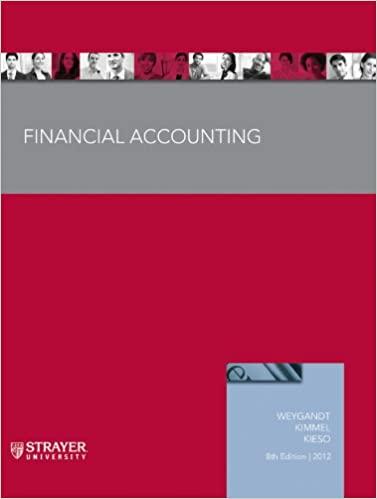Answered step by step
Verified Expert Solution
Question
1 Approved Answer
Windsor Company is considering the purchase of a new machine. The invoice price of the machine is $ 1 0 6 , 0 0 0
Windsor Company is considering the purchase of a new machine. The invoice price of the machine
is $ freight charges are estimated to be $ and installation costs are expected to be
$ The salvage value of the new equipment is expected to be zero after a useful life of
years. The company could retain the existing equipment and use it for an additional years if it
doesnt purchase the new machine. At that time, the equipments salvage value would be zero. If
Windsor purchases the new machine now, it would have to scrap the existing machine. Windsors
accountant, Patricia Johnson, has accumulated the following data for annual sales and expenses,
with and without the new machine:
Without the new machine, Windsor can sell units of product annually at a perunit selling price of $ If it purchases the new machine, the number of units
produced and sold would increase by and the selling price would remain the same.
The new machine is faster than the old machine, and it is more efficient in its use of
materials. With the old machine, the gross profit rate is of sales, whereas the rate
will be of sales with the new machine.
Annual selling expenses are $ with the current machine. Because the new
machine would produce a greater number of units to be sold, annual selling expenses
are expected to increase by if it is purchased.
Annual administrative expenses are expected to be $ with the old machine, and
$ with the new machine.
The current book value of the existing machine is $ Windsor uses straightline
depreciation.
Prepare an incremental analysis for the five years that shows whether Windsor should retain the
existing machine or buy the new one. Ignore income tax effects.If an amount reducesthe net
income then enter with a negative sign preceding the number or parenthesis, eg
Enter all other amounts as positive and subtract where necessary. Do not leave any answer field blank.
Enter for amounts.
Step by Step Solution
There are 3 Steps involved in it
Step: 1

Get Instant Access to Expert-Tailored Solutions
See step-by-step solutions with expert insights and AI powered tools for academic success
Step: 2

Step: 3

Ace Your Homework with AI
Get the answers you need in no time with our AI-driven, step-by-step assistance
Get Started


